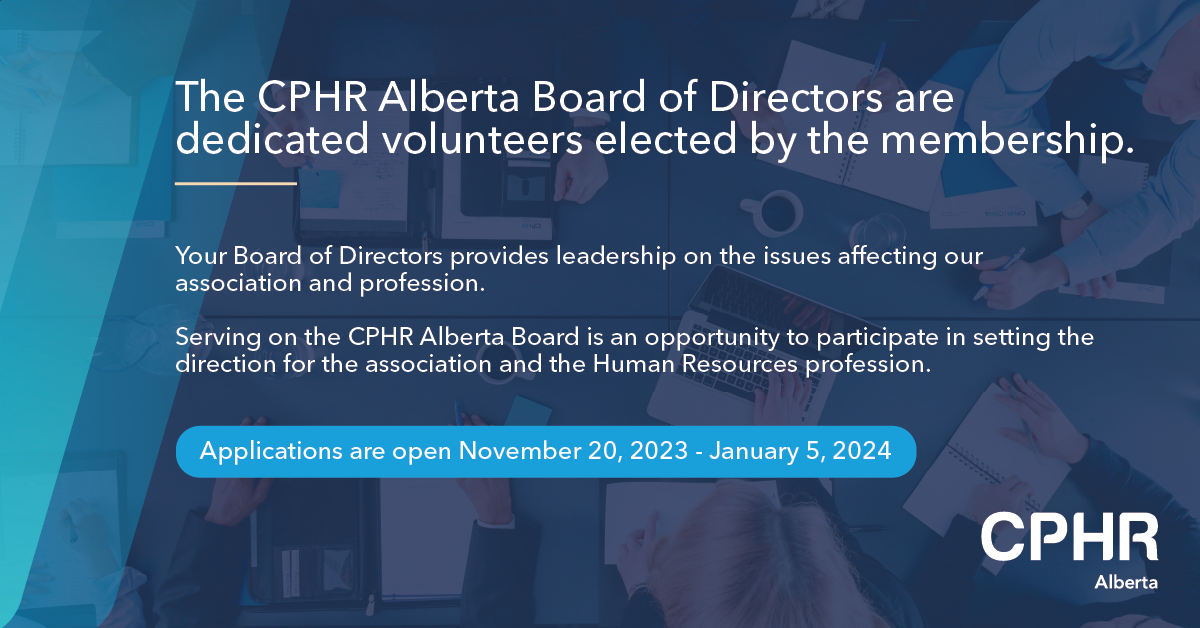
Make a difference at CPHR Alberta
Help set the direction for your association on the CPHR Alberta Board of Directors.
From self-regulation and the future of our designation to relationships with other provincial HR associations to the sustainability of CPHR Alberta itself, the Board of Directors is the governing voice of CPHR Alberta. Our volunteer Directors share their time, talent and expertise to represent the interests of fellow CPHR Alberta members and stakeholders.
Board volunteers provide oversight and guidance in a number of key areas. In 2023, the Board, alongside CPHR Alberta operations, continued delivering on the association's priorities that were developed in the 2020 strategic plan.
To continue this positive momentum, we are recruiting for three (3) three-year Director positions commencing in May 2024.
The CPHR Alberta Board of Directors value diversity, equity, and inclusion, and supports the election and appointment of diverse candidates to the Board. The Board believes that having a diverse Board contributes to a balanced and effective Board – one that is well-positioned to address the changing needs of the organization and our membership.
CPHR Alberta Board of Directors Application Process
Ensuring the CPHR Alberta Board of Directors has the skills and experience to guide the association is a priority. For 2023 / 2024 Board applications and elections will follow a six-step process:
- Applications open on November 20, 2023 to January 5, 2024 and only CPHR Alberta Chartered Members can apply. Members are encouraged to review the position profile , including qualifications and desired skills.
- Our online form makes applying easier. It should only take a few minutes to complete the form within your member profile. You can locate the form under the MENU, within your member portal. Click here to start.
- The CPHR Alberta Board of Directors Human Resources Committee will review all the applications following the close of applications on January 5, 2024. Your members of the committee are Jesse Grieder (Director, Committee Chair), Lisa Watson, (Board Chair, Committee Vice-Chair), Steve Kovacic (Director), Geordie MacPherson (Board Vice-Chair), Shawn Paulson (Director).
- Interviews of eligible candidates will be conducted by the Human Resources Committee in February 2024. These interviews will be used to create a slate of the most qualified candidates.
- The slate of candidates will be presented to the Membership for the Board Election period of March 1 – 15, 2024. All Chartered members are eligible to vote in the Election.
Election results will be presented to the Membership during the Annual General Meeting on May 10, 2024.
Shape the future of CPHR Alberta.
Questions about the CPHR Alberta Board of Directors nominations? Email Lisa Watson, Board Chair, at chair@cphrab.ca
The views and opinions expressed in this blog post belong solely to the original author(s) and do not necessarily represent the views and opinions of CPHR Alberta.





